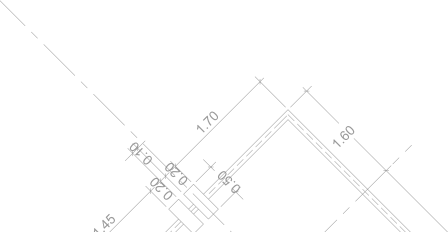

You are part of the team too
You are critical to the success of your project. Take time to get prepared.
Where do I start?
Before you start studying, it is important to recognize that there are facts and there are feelings. Once you have internalized this distinction, it will be much easier to navigate the entire experience.
Feelings. You are building your home. The idea of home is fully connected to our emotions: family, love, safety, beauty, ego. Social media with curated posts, magazines with beautiful pictures, and reality TV shows (which aren’t actually real at all) with flawless execution and adoring clients are all targeting your emotions even if they mask their approach with numbers and “facts.” Feelings are real, but don’t let them take you off target. Building your home takes work and isn’t easy every step of the way. But done well with a team you trust, the journey should be rewarding and even fun.
Facts. Your hard earned money and the days on the calendar are facts. So is your home once it is built. Unfortunately, looking for facts about building costs in the digital world where too much is written and not enough is understood can set you up to fail. For instance, you may think that cost-per-square-foot is a simple metric. It is not. Is the cost you are finding a cost-per-square-foot of conditioned space, adjusted/normalized space, or gross/total built space? Does it include the cost of demolition, site work and utilities and landscape, or is it “from the footings up”? Is the cost from a project that is two years old or current? Is it a cost for a custom, a custom/spec homes or a regional average? Remember that people want to look smart and sharing a low number makes them look like they were clever enough to get a deal.
What do I need to learn?
You need to be conversant in the language and local customs of construction. Think of yourself more akin to a tourist who wants to engage with a foreign culture called ‘construction’, not as someone who wants to emigrate and actually become an architect or general contractor. Read an issue of Environmental Building News, the Journal of Light Construction, or Fine Homebuilding Magazine and familiarize yourself with the language, the tone, and the tempo of the industry. Listen to learn, rather than simply listening to respond. Speak with friends to learn from their experiences. Then engage with architects and builders to find a team you connect with, trust, and want to work with. And remember, whether you hire someone or not, you can learn from them.
You need to learn how to be part of a construction project team, not a boss or a bystander. Ultimately, the success of any project depends on the performance of the team. The best team members can come up short if the team culture is broken. You influence the culture through your engagement. Demonstrating curiosity and respecting the talent and experience of team members will go a long way. Likewise, being sure that you and your spouse or partner are aligned before providing the team guidance. Clearly state your goals and stay true to what you say – if the team sees the alignment between words and actions, they will know how to contribute their expertise. It is ok if your goals evolve, but if they do evolve, pause to acknowledge they have changed rather than creating confusion by stacking changes of direction on top of previous guidance.
Help others learn as well. During the project as the team settles, clearly express what is working and what isn’t working in the team dynamic. If you don’t understand the numbers, tell the team you need their help in understanding. If you don’t understand how something on a drawing will look once it is built, ask the team for images or a mock-up of the design so you can see. If the team is creating confusion for you by including you in too many details, tell them to focus their discussions with you on things where your input is required. Likewise, if you want to understand your home on a more technical level, ask them to explain. If you don’t say what you are thinking or feeling, the team won’t know and won’t adapt.
The more you can learn and the more you can transparently contribute to an environment where everyone on the project feels valued and heard, the better your project will go. If you really want to think about getting the most from your project team, read a book like Mindset by Carol Dweck or Leaders Eat Last by Simon Sinek before you jump in.
Why do some clients get so frustrated with their project?
Frustration often starts with confusion between fact and feeling and misaligned expectations, and grows due to a lack of open communication. Clients all but universally say, “we are great decision makers” and then, when they fail to make timely decisions, say, “nobody told me the decision was time critical, I know there was a due date but what does a few days or a week matter?” If you are having trouble keeping up with decisions, say so, don’t try to shift the blame to other team members. And if something feels wrong on the team, don’t sit quietly. Ask questions, share what you are experiencing, and make course corrections early. Very few people enjoy conflicts, and small course corrections can often prevent bigger problems and conflicts from developing.
Frustration also can develop when a client detects what they perceive as a vacuum and try to fill it themselves. Rather than discuss the concerns with the team, enabling team members to contribute their expertise, and establishing a culture of accountability, clients (and sometimes architects) start giving orders and get frustrated when team members do as they are told rather than what they know from experience that they should do. It’s rare that a team member needs to be replaced for lack of performance, but the occasions where replacement is necessary will only become apparent when the team member is given a chance to contribute.




